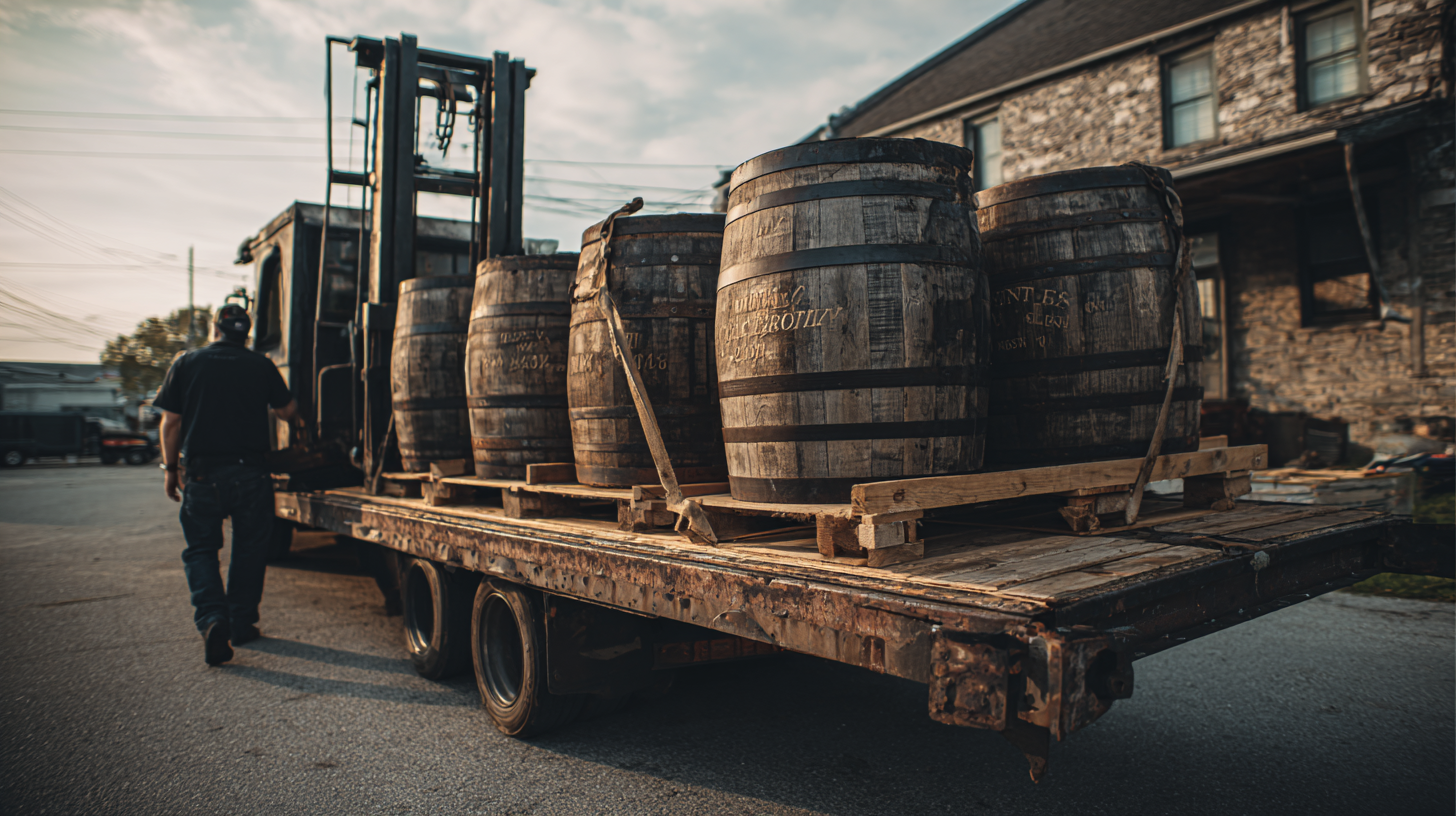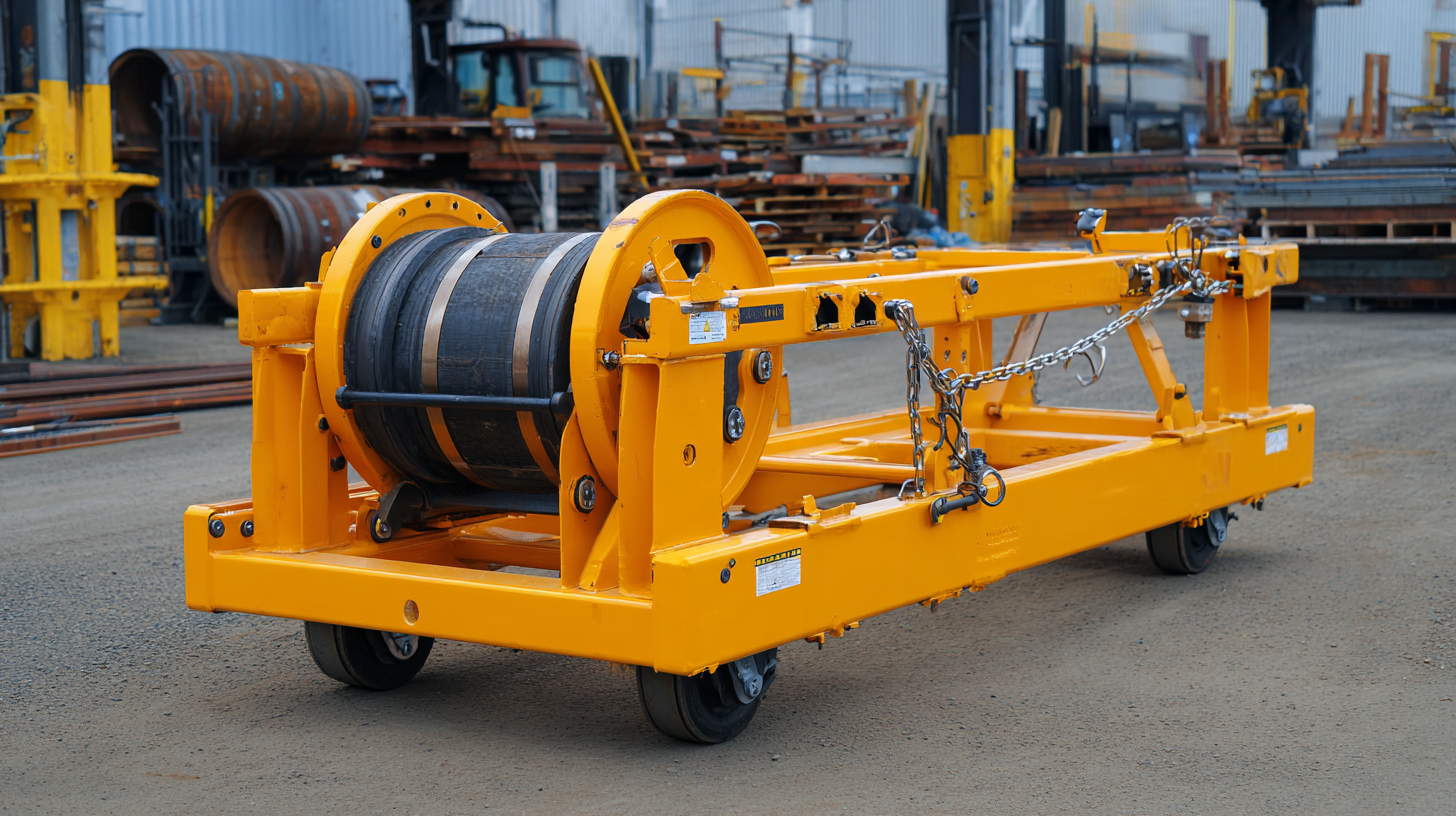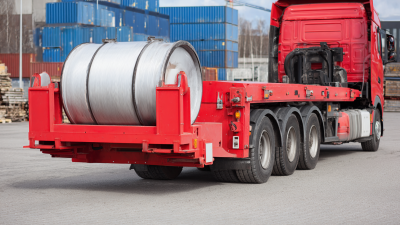The Ultimate Guide to Choosing the Best Barrel Lifter for Your Needs
 Choosing the right barrel lifter is crucial for ensuring efficiency and safety in handling heavy barrels, whether you're in a warehouse, manufacturing facility, or a brewery. With a myriad of options available, selecting the best barrel lifter for your specific needs can feel overwhelming. This guide aims to simplify the decision-making process by providing essential tips and insights into the various types of barrel lifters on the market.
Choosing the right barrel lifter is crucial for ensuring efficiency and safety in handling heavy barrels, whether you're in a warehouse, manufacturing facility, or a brewery. With a myriad of options available, selecting the best barrel lifter for your specific needs can feel overwhelming. This guide aims to simplify the decision-making process by providing essential tips and insights into the various types of barrel lifters on the market.
From understanding the weight capacities and design features to considering the frequency of use and storage space, we will delve into the key factors that should influence your choice. Whether you're looking for a manual, semi-automated, or fully automated solution, this ultimate guide will arm you with the knowledge necessary to make an informed decision, ensuring you pick a barrel lifter that enhances productivity while maintaining the highest safety standards.
Understanding Different Types of Barrel Lifters: Which One Suits You Best?
When it comes to selecting the right barrel lifter, understanding the different types available is crucial for both efficiency and safety in your operations. Barrel lifters come in various designs, each tailored to meet specific needs in lifting and maneuvering barrels of different sizes and weights. For instance, manual barrel lifters are ideal for lighter barrels, relying on human strength and technique to lift and transport. Conversely, powered barrel lifters are better suited for heavier loads, providing ergonomic assistance that reduces the risk of injury while also speeding up the process.
In addition to considering the weight and size of the barrels, it's important to evaluate the environment in which the barrel lifter will be used. Some models are designed specifically for tight spaces or uneven surfaces, ensuring versatility across different work areas. Other factors to contemplate include the lift height requirements and whether the lifter needs to accommodate various barrel types, such as plastic or steel. By assessing these aspects carefully, you can select a barrel lifter that not only fulfills your requirements but also enhances overall operational efficiency.

Key Features to Consider When Choosing a Barrel Lifter for Your Unique Needs
When selecting the best barrel lifter, it's essential to focus on key features that tailor the equipment to your specific requirements. Firstly, weight capacity is crucial; different lifts accommodate various barrel sizes and weights, so ensure you choose one that can handle the heaviest barrels you'll be lifting. Look for options that provide a robust design with high-quality materials to enhance durability and stability during use.

Another important feature is mobility. Depending on your workspace, a barrel lifter with wheels or a compact design can greatly improve efficiency, allowing you to maneuver around tight spaces with ease. Additionally, consider the type of handle or lifting mechanism – whether manual or powered – as this can significantly affect the ease of operation and operator comfort.
Prioritizing ergonomic designs can help reduce strain and improve safety, which is especially critical if you're using the lifter frequently. Evaluating these elements will ensure you find a barrel lifter that meets your unique needs effectively.
Top 5 Tips for Ensuring Safety While Using Barrel Lifters Effectively
When using barrel lifters, safety should always be your top priority. First and foremost, ensure that you are using the right type of barrel lifter for the specific weight and size of the barrel. Different designs accommodate various barrel types, so select a lifter that matches your needs to avoid accidents. Additionally, always inspect the equipment for any signs of wear or damage before use; a faulty lifter can lead to serious injuries.
Another vital tip is to maintain proper lifting techniques. Stand with your feet shoulder-width apart and keep your back straight while lifting. Use your legs to bear the weight, not your back. This method minimizes strain and reduces the risk of injury. Furthermore, be mindful of your surroundings; ensure that the area is free from obstacles and that you have a clear path to your destination. Enlist a buddy to assist if the barrel is particularly heavy or awkward to handle, as having an extra pair of hands can significantly improve safety and efficiency.
Comparing Price versus Quality: How to Assess Value in Barrel Lifters
When selecting a barrel lifter, it is essential to consider the balance between price and quality to ensure you are making a worthwhile investment. While it might be tempting to opt for the cheapest option on the market, lower-priced lifters often compromise on safety features, durability, and ease of use. Evaluating the manufacturer’s reputation and material quality can give insight into the potential longevity of the product. A barrel lifter that holds up well under heavy use will ultimately save you money and frustration in the long run.
Additionally, assessing value involves looking beyond the initial price tag. Consider the specific features that might enhance usability, such as ergonomic designs, adjustable heights, or additional safety mechanisms. These features might come at a higher cost but can greatly improve efficiency and reduce the risk of injury during operation. Therefore, it is crucial to analyze how each model aligns with your specific needs and the environment in which it will be used, ensuring that you select a barrel lifter that not only fits your budget but also meets the demands of your tasks effectively.
The Ultimate Guide to Choosing the Best Barrel Lifter for Your Needs
Maintenance Tips to Extend the Life of Your Barrel Lifter and Maximize Performance
Maintaining your barrel lifter is essential not only for safety but also for maximizing its performance and extending its lifespan. According to industry reports, regular maintenance can increase the service life of a barrel lifter by up to 30%. Key maintenance tasks include inspecting hydraulic systems, lubricating moving parts, and checking for wear and tear on both the lifting mechanism and the wheels. Performing these checks every six months can help identify potential issues early, preventing costly repairs or replacements later on.
In addition to regular inspections, proper usage and storage of your barrel lifter can significantly impact its longevity. Studies show that mishandling equipment leads to a 25% increase in operational failures. To mitigate this, operators should be trained on the correct loading techniques and weight capacities. Furthermore, storing the lifter in a climate-controlled environment can help prevent rust and corrosion, both of which are common in harsh working conditions. By incorporating these maintenance tips into your routine, you can ensure your barrel lifter operates optimally and remains a reliable asset in your operations for years to come.
Related Posts
-

5 Essential Reasons to Choose the Best Drum Lifter for Your Industrial Needs
-

Finding Quality Suppliers for Best Drum Lifters and Tilters Ultimate Checklist Guide
-

Understanding the Functionality of Barrel Lifters in Modern Industry
-

Exploring Innovative Alternatives to Drum Lifters and Tilters for Efficient Material Handling
-

A Comprehensive Comparison of Drum Lifters and Tilters Efficiency in Industrial Applications
-

Emerging Trends in Barrel Lifters at the 2025 China Import and Export Fair
